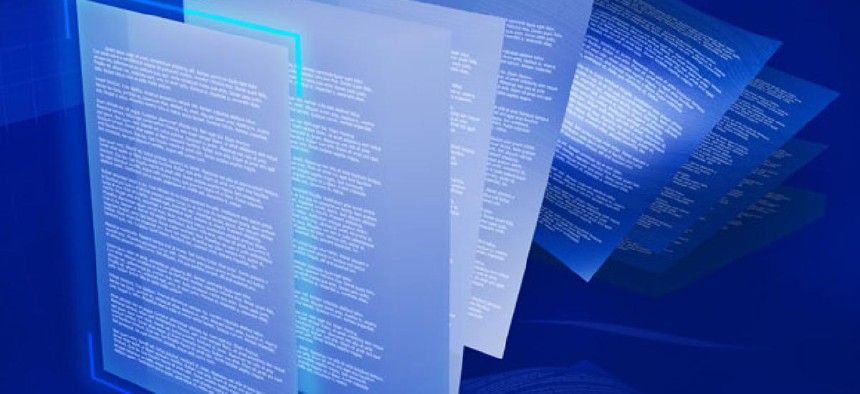Goodbye Paper: VA Installs Automated Claims System in All Regional Offices

pling/Shutterstock.com
Program is key to addressing the claims backlog.
The Veterans Affairs Department finished installing its paperless Veterans Benefits Management System last week in all 56 of its regional offices. VBMS is key to helping the department eliminate its backlog of disability claims, senior officials have said.
“Now that the system is in place, much work continues to be done as we roll out more features and train more users,” said Tommy Sowers, assistant secretary of public and intergovernmental affairs, in a note to reporters.
Nextgov reported in January that VA farmed out 21 percent of the work on VBMS, valued at $105 million since 2010, to the Space and Naval Warfare Systems Center Atlantic.
Last week, after visiting VA offices in Manchester, N.H., Secretary Eric Shinseki said “This is a big cross-over year for us. We have for decades sat astride rivers of paper. Now we are in the process of turning off paper spigots and turning on electronic ones.”
Shinseki has said VBMS will help VA eliminate the disability claims backlog by 2015. VA reported it had 851,229 disability claims pending as of June 10, with 565,327, or 66.4 percent, backlogged more than 125 days. That’s a decline of 52,055, or 5.8 percent, from the 903,286 claims VA had pending on March 25, and a drop of 68,262, or 10.8 percent, from the 633,589 claims stuck in processing for more than 125 days at the end of March.
In a related development, the 2014 Defense Authorization Bill passed by the House on June 14, includes an amendment from Rep. Ann Kirkpatrick, D-Ariz., that directs the Pentagon to provide VA with veterans’ service records in an efficient, electronic format.
This amendment codifies plans by Defense to use a bulk scanning system for paper medical files. It also requires Defense to provide VA with service members’ certified, complete and electronic records within 90 days of military discharge or release.
(Image via pling/Shutterstock.com)
NEXT STORY: Survey Predicts Major Savings from Big Data






